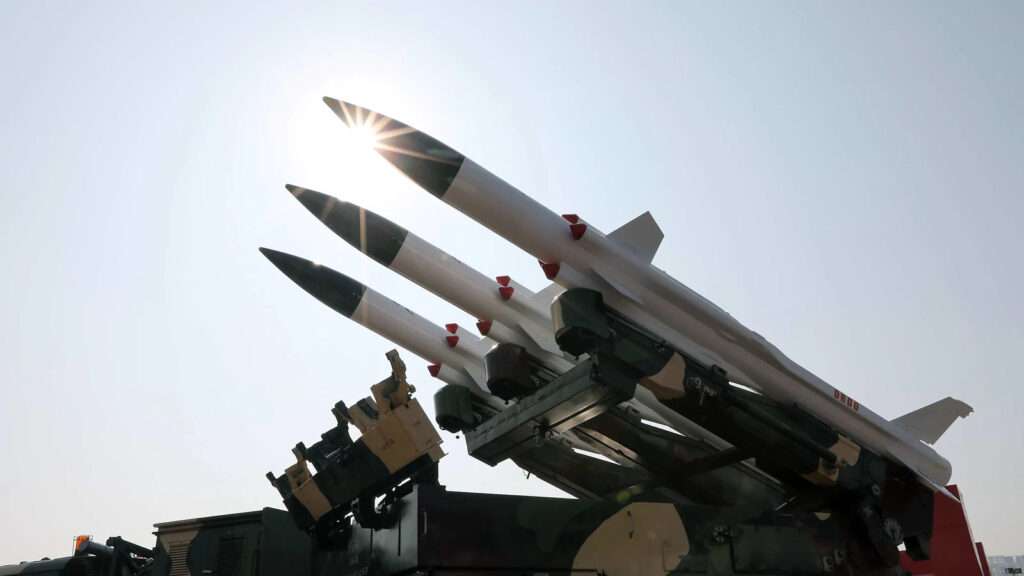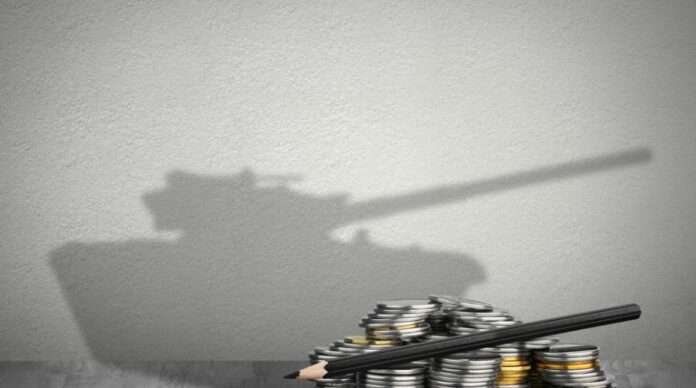Last year’s economic performance was marginal; most of the macro-economic targets were missed, some widely others narrowly. Unless requisite structural reforms are implemented, this trend is likely to continue. The budget envisages 5.5% GDP growth target for the next financial year, which seems to be substantially higher than 4.24% that the country could achieve during the outgoing financial year. If reforms materialize, there is every reason for achievement of growth target.
Pakistan’s spending on military is the lowest as compared to the countries from whom it perceives a military threat. Earlier India had hiked its military spending by 11 percent. This year, India is spending 47 trillion rupees ($40 billion) on upkeep end readiness of its armed forces. India’s budget is more than five times Pakistan’s defence spending. In real terms India upped its budget by US$ 5 billion, which is only $ 2 billion short of Pakistan’s total budget—it represents an acute asymmetry which leaves many Pakistani defence analysts worried, because India is already the world’s largest weapon importer. India is expected to spend $100 billion over a decade on its defence upgrade programme.
Pakistan has reluctantly upped its defence budget for 2015-16 by 11 percent. Total defence outlay is Rs.700.2 billion as compared to Rs.627.2 billion allocated in the outgoing fiscal year, showing an increase of Rs 73 billion. The actual increase in defence expenditure is about 8% or Rs.63 billion when compared to the revised figures for 2014-15. Military had sought an increase of Rs 173 billion.
Out of Pakistan’s defence budget, Pakistan Army would get 48 percent while 20 percent goes to Pakistan Air force, and Navy’s share is 10 percent. Of Rs 700.2 billion, Rs.293.5 billion have been allocated for employees related expenses, Rs.180.2 billion for operating expenses and Rs.152.8 billion have been earmarked for physical assets. In line with earlier practice, figure of Rs.700.2 billion does not include Rs.163.4 billion allocated for pensions of the military personnel that would be given from appropriate heads of the national budget. This practice is followed by most of the countries including India.
In addition, military would also be given Rs.165 billion under the contingent liability and Rs.85 billion under the Coalition Support Fund (CSF). Summing up the direct and indirect allocations, in real terms Rs.1113 billion have been allocated for the military, which is about 28.2 percent of the country’s total budget. CSF is the reimbursement of the expenditure by Americans after it has been incurred by Pakistan’s military in support of Afghan conflict related military activities and services; hence this is more of book adjustment action than a material allocation for the year 2015-16.
An analysis of the defence budgets of previous years indicate that though during the preceding five years defence expenditure has almost doubled from around 350 billion in 2009-10 to Rs.700 billion this year, the rate at which it has been increasing has continuously diminished. In 2009-10, government increased the defence budget by 21.46 percent, which was reduced to 17.58 percent in 2010-11. In 2011-12 the defence expenditure was upped by 14.73, which further dropped to 11.79 percent in 2012-13. Given the internal security challenges much of the increase in this year’s defense budget by Pakistan is likely to be spent on the fight against militancy.
Pakistan has four immediate neighbours China, Iran, Afghanistan and India alongside a long coastline to its South. Pakistan has no threat from China and Iran, in the traditional domain, there is no history of unmanageable threat from the sea side as well. Militarily, Afghanistan becomes a country of concern as and when it houses extra-regional forces on one pretext or the other; and threat recedes in-terms of military value when foreign forces depart. However, Pakistan has a history of facing traditional threat from India in the form of use of or threat to use military force.
Pakistan strives for a sustainable equilibrium in the South Asia. Higher conventional military asymmetry between India and Pakistan is one of the most serious threats to South Asian security. Indian actions and intent that radiate, aggravate and substantiate traditional threat are: India has a numerical advantage in personnel and inventory that varies between 1:3 and 1:5 in favour of India; Indian defence budget is more than five times the Pakistani defence budget.

India has an inclination to embrace dangerous doctrinal concepts. Ideas of limited warfare under nuclear overhang, Cold Start Doctrine or Proactive operations and massive retaliation indicate provocative mind-set of Indian military command. Ongoing massive force modernization and conventional arms build-up by India is estimated to cost 120 billion spread over 10 years, Stockholm International Peace Research Institute (SIPRI) Fact Sheet released in March 2014 reveals that India was the world’s largest importer of major conventional weapons between 2008–13. India’s imports of major arms increased by 111 percent between 2004–2008 and 2009–13, making it the world’s largest importer.
During 2009–13 India invested heavily in air-strike capabilities; received 90 of 222 Su-30MKI combat aircraft ordered from Russia. It also received 27 of a total of 45 MiG-29K combat aircraft for use on aircraft carriers. India has 62 Russian MiG-29SMT, 49 French Mirage 2000-5 and 36 French Rafael combat aircraft on order. During the next fiscal year, it is contemplating to order, 126 combat air-craft, 15 Apache attack helicopters, 22 CH-47F Chinook medium lift helicopters, 197 light helicopters and 145 Ultra-light Howitzers. Ongoing integrated missile development programme is being given capability enhancement related tasks. Moreover, exclusive capabilities like nuclear submarines, aircraft carriers, and long range military air transport aircraft are under procurement. Cyber and space programmes are receiving focused attention. An anti-ballistic missile (ABM) system is undergoing operational trials. India also aspires for achieving a potent Space Warfare capability.
By declaring China its principal enemy, India has forestalled the possibility of bilateral arms control and arms reduction arrangements between Pakistan and India. Indian Military capability put together on the pretext of China could be unleashed entirely against Pakistan, on as required basis. Over 80 percent of Indian arsenal is Pakistan specific and nearly 90 percent of its military command and control structures are Pakistan oriented.
Due to a smaller economy Pakistan does not wish to match India weapon by weapon. Pakistan has proposed a Strategic Constraints Regime seeking mutual agreement on reduction of conventional forces and not deploying ABM systems etc. Apparently India is not interested in lowering the tensions, recent statements by Indiana minsters indicate that India has embarked on a well calculated anti-Pakistan policy.
Under the circumstances Pakistan is under compulsion to maintain an increasingly expensive military capability to deter India from any misadventure. In this context modest hike in Pakistan’s defence budget stands justified; even though Pakistan would like to reduce its military spending and divert the funding for social sector development. Unfortunately key to defence spending cut is with India and not Pakistan. However, at the same time, there is need for economic belt tightening within the armed forces—especially in the domains of work services and procurement, both through domestic and international markets. There is a need to enhance procedural control over the contractual transactions. A reappraisal of tooth-to-tail ratio is, indeed, long overdue.




